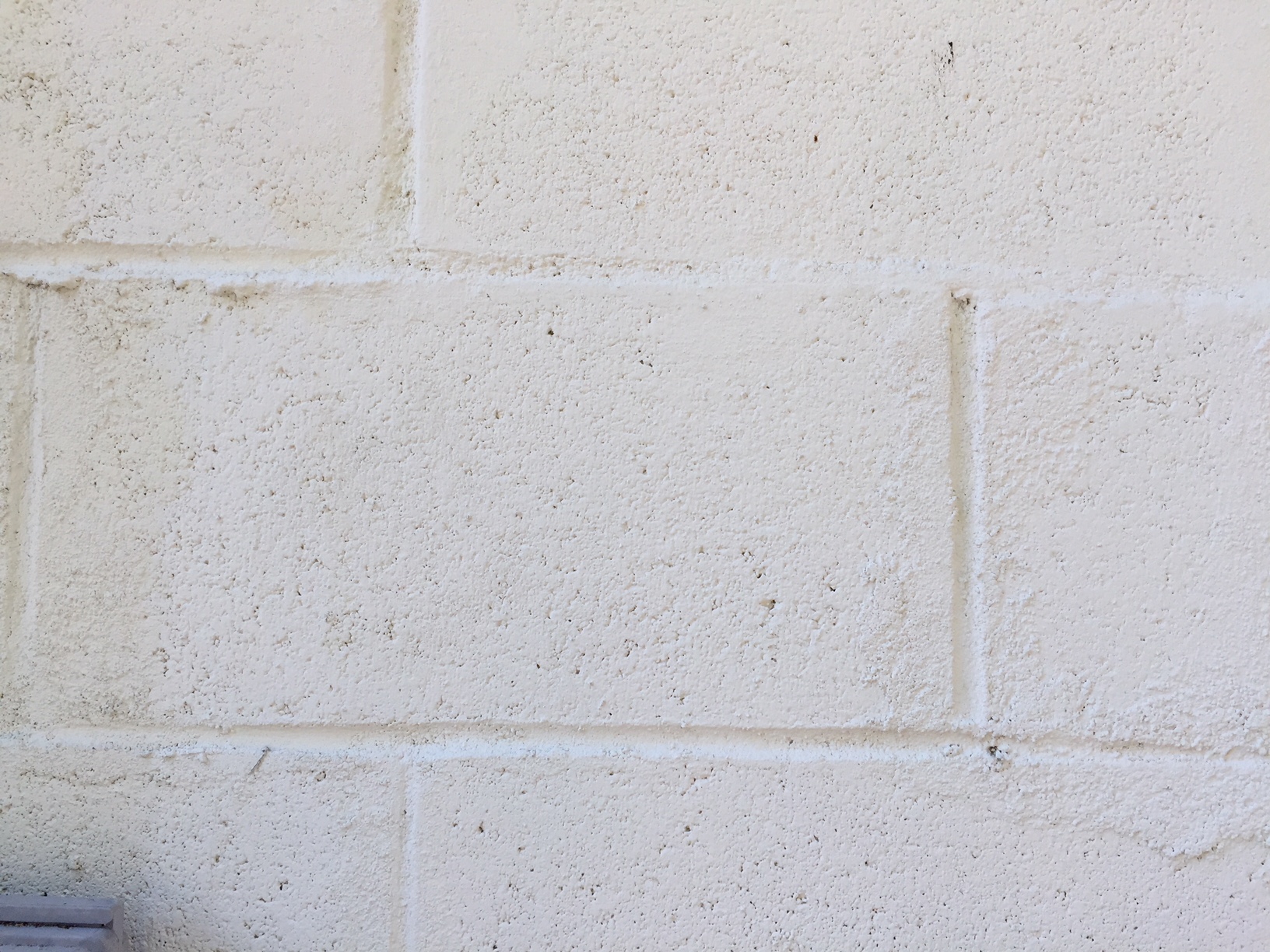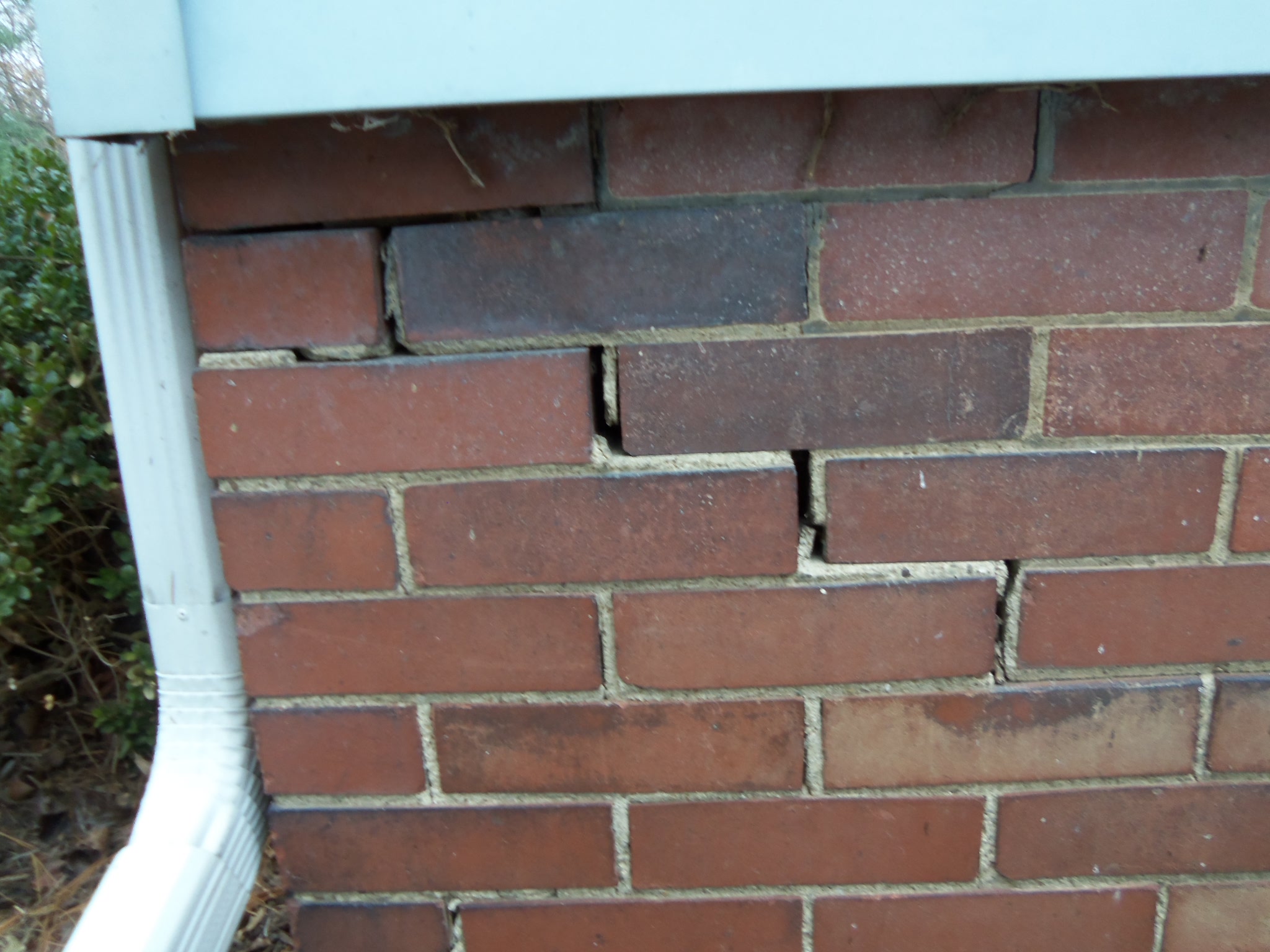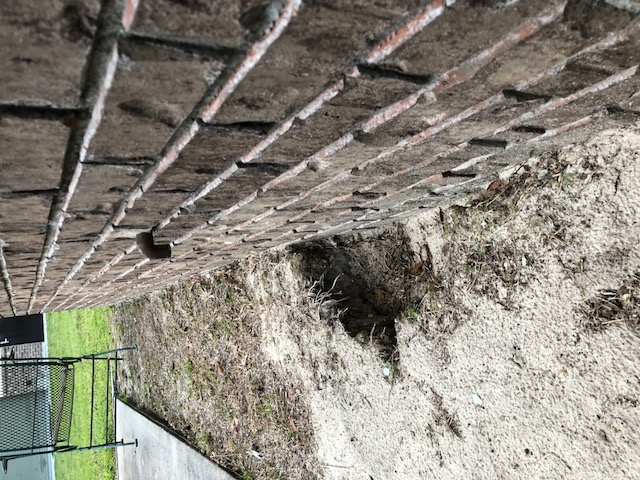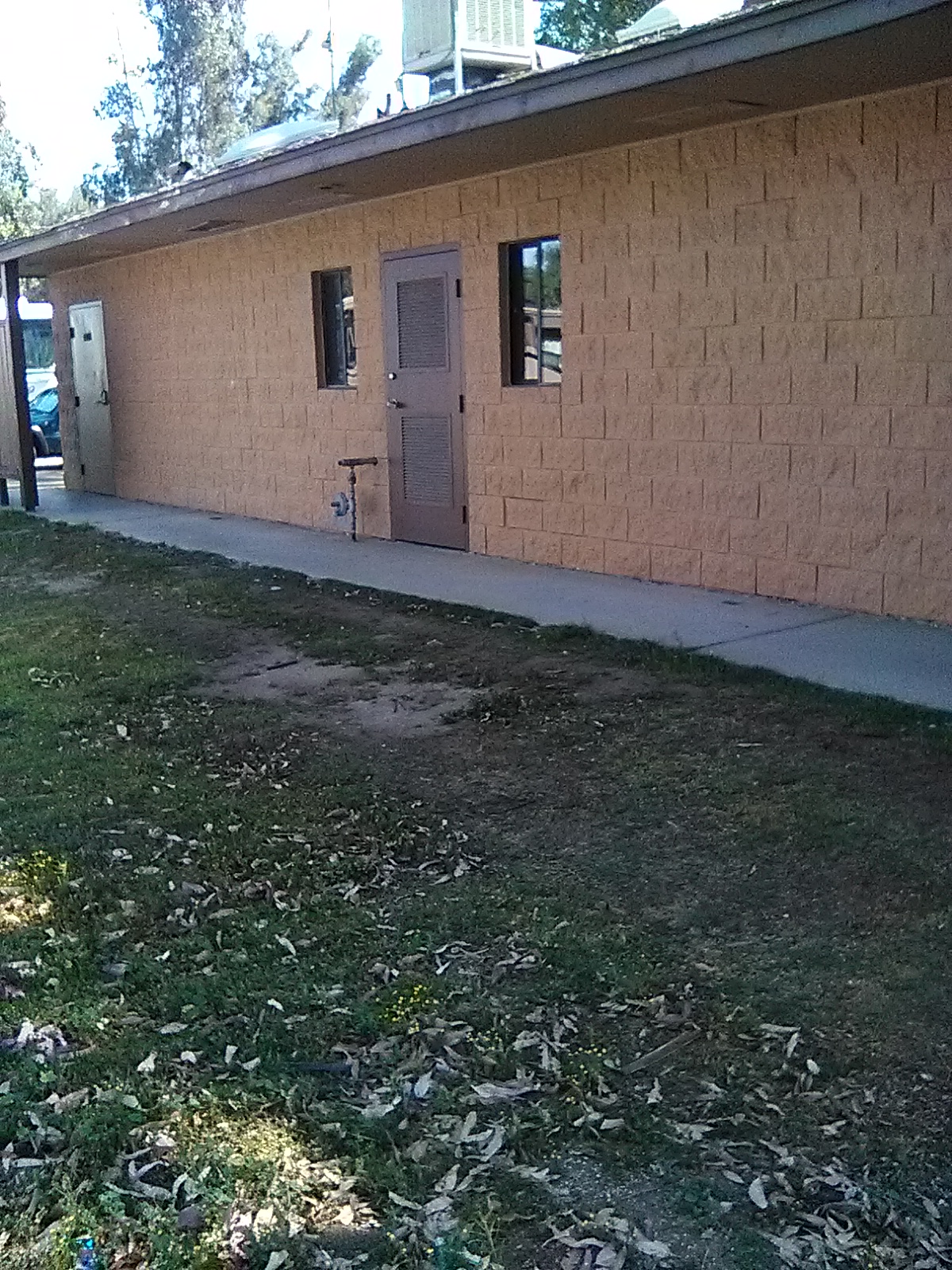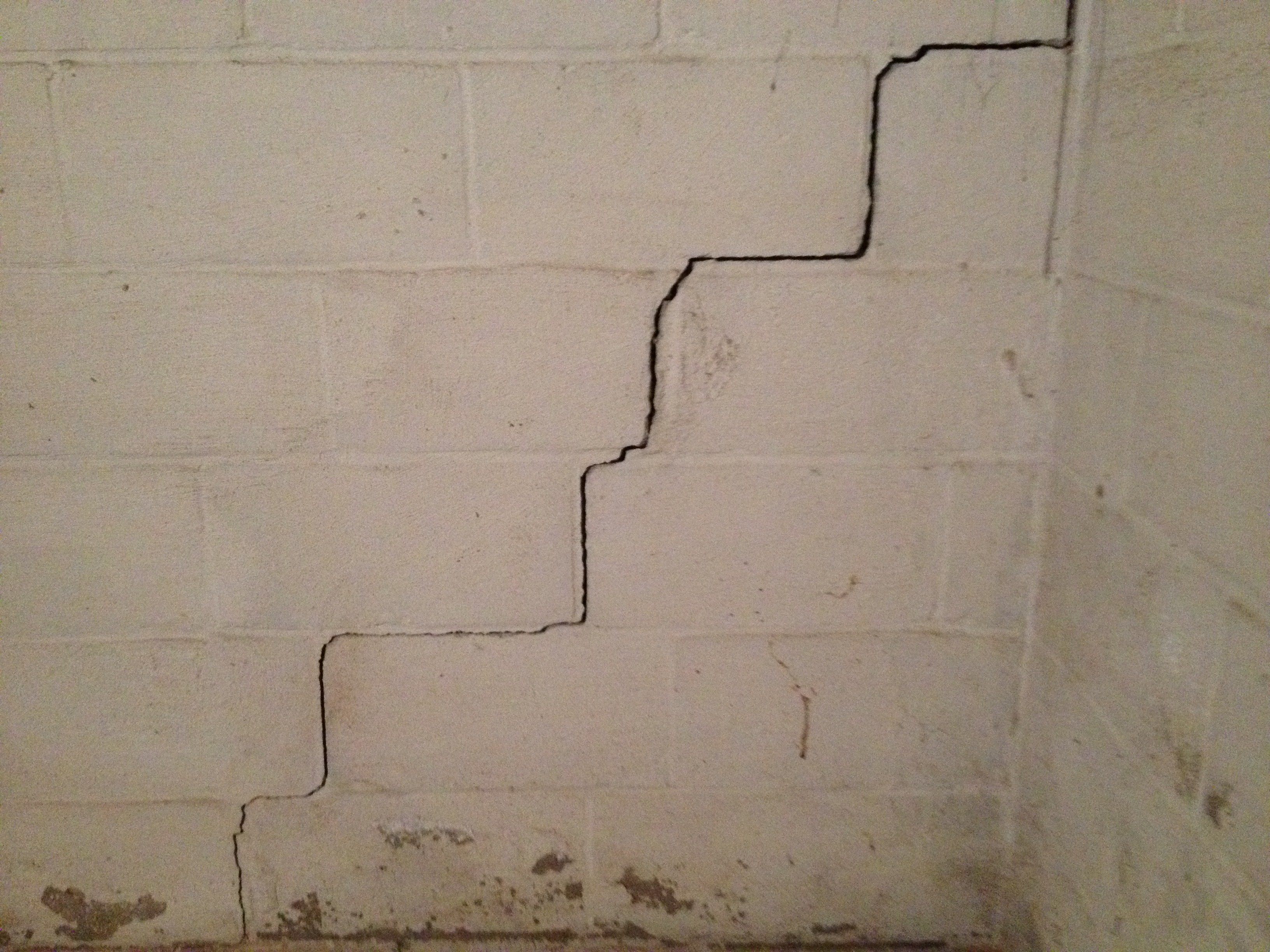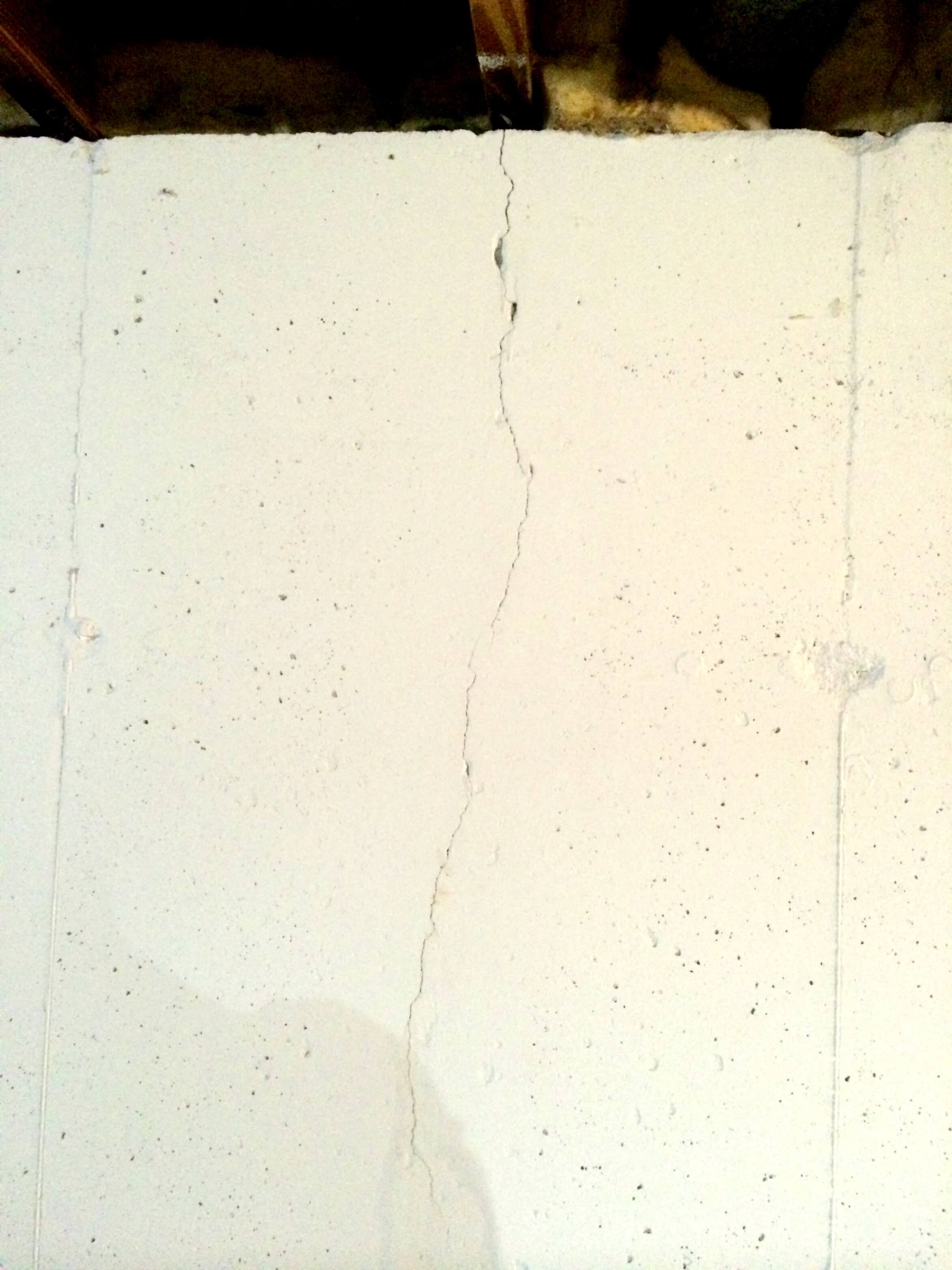Settlement cracking results from improperly packed soils and from improper diversion of runoff water from the roof away from the foundation of the house. As the soil compacts under the weight of the house or water erodes the soil, settlement cracks will appear. These cracks generally appear at the corners of the the windows, doors and at the corners of the house.
This is a photo of one of the cinder block walls comprising the ground floor of a single family home. The block shown shows no obvious signs of cracking, spawling, bowing, sweeping, or other deterioration despite having been painted over several times.
I read the article “Concrete for Exterior and Structural Walls” by Nick Gromicko and Barry Fowler. The article explores some of the cost-benefit factors homes built out of concrete compared to those built out of wood. The authors discuss noise, fire, and durability (among other issues) of both concrete and wood homes before concluding that concrete homes are superior to wood homes in many ways.
This is a picture of brick veneer which has some missing morter and cracking. This damage is most likley due to moisture intrusion and freezing during the winter months. The downspout terminated less than a foot from the foundation.I recommended further evaluation by a licensed masonry professional.
I read the article “Basic Waterproofing for Basements”. A properly waterproofed basement can lesson the risk of damage to a house do to moisture intrusion. Diverting water away from the house is a good way to keep moisture out of a basement. Proper roof and surface water drainage are important to the process.
Water erosion of the soil from the TPV on the hot water heater. Consider placing a concrete splash block to stop erosion around the foundation of the home and further prevent moisture intrusion into the brick, mortar, and foundation components.
In this course i could understand the different problems caused by the settlement of the foundations the reaction on the concrete how the different climate affected.
Also the different ways how reflecting in the property and the significant lose for the clients if the problem was no detect by the inspector.
There are many that would claim that wood foundations offer advantages over their masonry counterparts.
Wood foundations are easier and cheaper to build and place than masonry foundations.
The design of wooden foundations require that dry soil is maintained around the foundation. Therefore, a properly built and cared for basement with wood walls should be dry and without mildew. Basement mildew, leakage and dampness are common in houses with masonry foundations. Wood also insulates better than masonry, and the foundation wall studs provide large cavities for insulation.
On a recent commercial inspection, this concrete block building was inspected. The building is constructed of 8x8x16 concrete block and was found to be solid grouted with rebar reinforcement. The structure was constructed in four foot lifts so no cleanouts were observed.
Buildings being constructed today are more energy-efficient. than those built even just a few years ago, primarily due to significant improvements in building products and techniques, as well as development of high-performance heating and cooling systems and other high end appliances.
This is a picture of a common step crack. Common step cracks form when a house settles in different directions. Common step cracks are called common because they are common. When they occur, they should be caulked, sealed, and painted.
The article that I read was, Concrete for Exterior and Structural Walls
by Nick Gromicko and Barry Fowler. ( https://www.nachi.org/concrete-exterior-walls.htm ). From this article, I learned that about one -sixth of new home construction are concrete homes. I also learned that concrete home offer more resistance to tornadoes and hurricanes than other homes.
Efflorescence is the resulting mineral deposits on the face of a masonry or concrete substrate such as foundation walls. In the case of a foundation wall, the presence of efflorescence may not be a defect per se, but should clue the inspector to search for the potential cause, such as drainage issues near the foundation walls.
An inspector should notate the construction methods of the siding when possible. Even if there is no defects to report on, modern building practices have drastically increased the insulation of exterior walls by using a variety of thermally insulative products underneath the finished siding. The presents of this could be of great value to the client and should be noted in the final report.
The surface of the ground in the crawl space should be entirely covered with a plastic vapor barrier. Vapor barriers will reduce moisture and humidity levels in the crawl space. Excessive moisture or high levels of humidity in the crawl space can cause structural damage and mold growth. Recommend installation of a vapor barrier.
It is common to find shrinkage cracks in poured concrete foundations. These cracks occur naturally during the curing process when its losing moisture. Shrinkage cracks are often vertical in orientation. This type of crack is typically non-structural, but should be sealed to prevent water or radon from escaping.
On this inspection we found a major defect on the wall that was caused by a critical foundation movement , because of this i personally recommend that this particular problem be taken care by a professional structure engeneer for everyone living in that home.
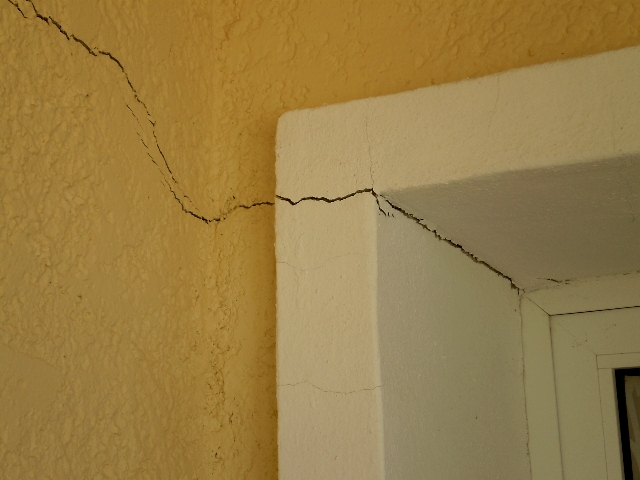
In the Inspecting Foundation Walls and Piers course.I learned the proper way to inspect foundation walls and piers i also learned the different type of materials there in that make up a structure wall there is a lot for example field stone and limestones
Frost-protected shallow foundations (FPSFs) provide protection against frost damage without the need for excavating below the frost line. An FPSF has insulation placed strategically around the outside walls to direct heat loss from the building toward the foundation, and also to use the earth’s natural geothermal energy.
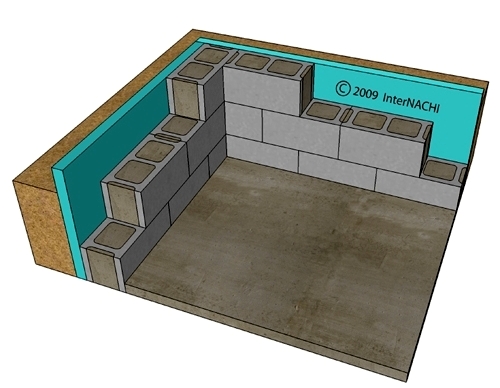
I chose an image that pertains to waterproofing. One way to help reduce water seepage is by using crystalline concrete waterproofing. This method uses a catalytic reaction to seal the pores, capillaries and shrinkage cracks that occur naturally in concrete. Crystalline waterproofing penetrates into the concrete.
